Louisiana is home to many of the country’s species of snake. It is also home to one of the largest rivers in the world: the Atchafalaya River. With two noteworthy characteristics, you may be wondering just how they overlap. This is where a question about the types of snakes in the Atchafalaya River comes into play. Not all snakes are suited to live in water. However, even those that don’t live aquatic lifestyles can typically be found around a water resource such as a river. To learn more about the types of snakes in the Atchafalaya River, keep reading below.
About Louisiana’s Atchafalaya River
The Atchafalaya River is a 137-mile-long distributary located in Central Louisiana. It is a distributary, or branch, of the Mississippi River. Its name, Atchafalaya, comes from Choctaw for “long river.” As a result, you might have guessed that this is one of the largest rivers in the area. In fact, it is considered to be the fifth-largest river in the entire United States.
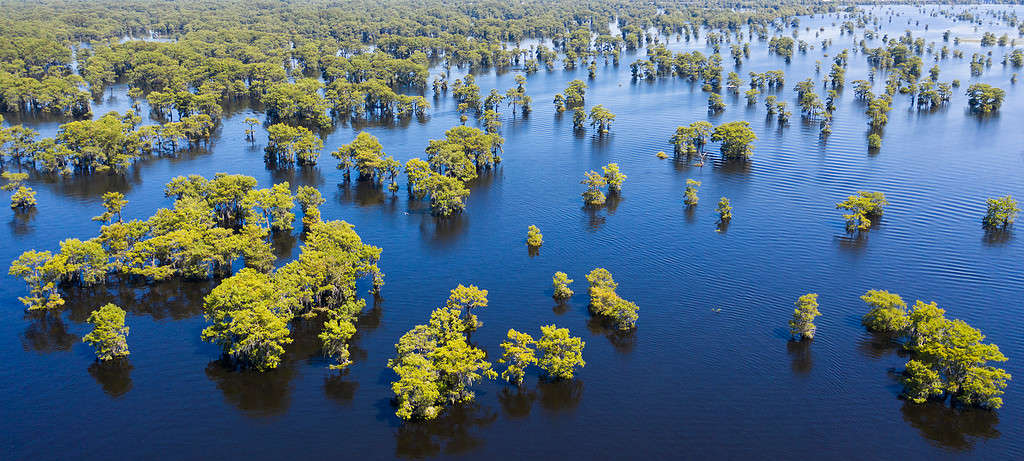
Louisiana is home to one of the largest rivers in the world: the Atchafalaya River.
©Sasha Craig/Shutterstock.com
Snakes That Call the Atchafalaya River Home
With more than 100 miles of water and countless square miles of river basin, many types of snakes exist in the Atchafalaya River. Read below to learn about the seven serpents that can be found in this habitat.
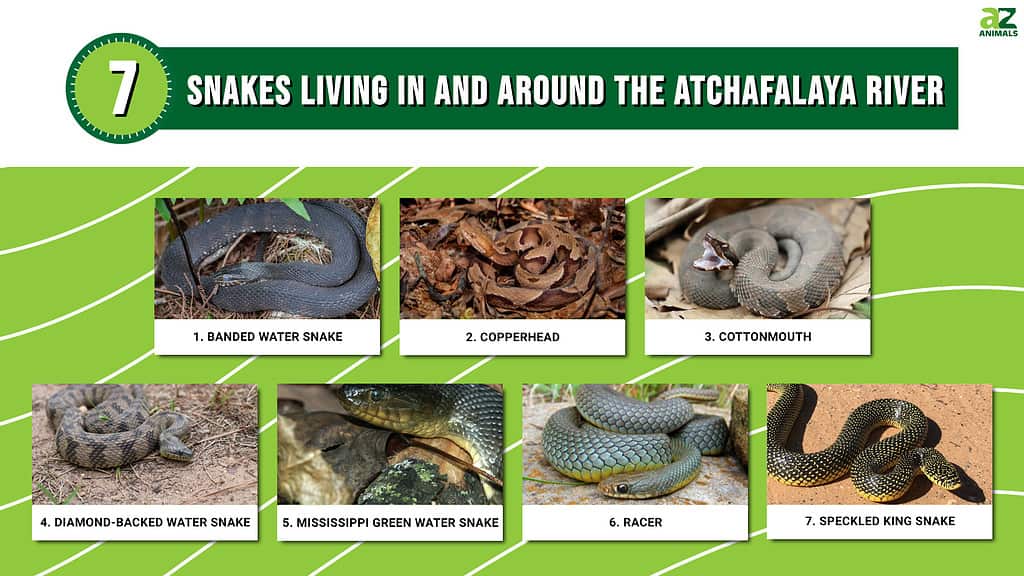
These snake species can be found in this river, which takes its name from Choctaw for “long river.”
©
1. Banded Water Snake
The banded water snake is a species of aquatic snake found only in the midwestern and southeastern regions of the United States. They are also known as the southern water snake, although this name is less common. Its name comes from the faint banding pattern on its body, which features horizontal stripes across the length of its dorsal side.
You can see the banded water snake at night or during the day. They are quite shy, however, preferring to stay submerged in waters with dense vegetation. Although they can grow quite large, over three feet in length, they are not venomous.

The banded water snake’s name comes from the faint horizontal stripes across the length of its dorsal side.
©EdwinWilke/Shutterstock.com
2. Copperhead
The copperhead is a common species of venomous snake that is native to the eastern region of North America. Rather than in the water itself, you can expect to see this snake in the area surrounding the Atchafalaya River. It favors woodlands and forests.
Unlike other species of snakes that will often flee when faced with a human, the copperhead prefers to freeze. This is because their unique coppery coloration is designed to keep them safe by helping them camouflage.
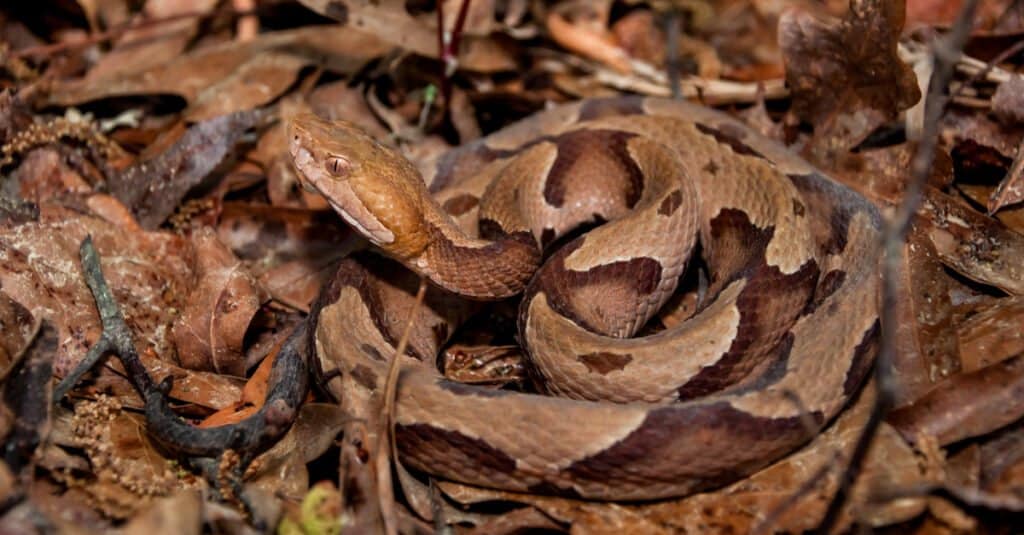
Copperheads can be found in woodlands and forests in the area surrounding the Atchafalaya River.
©Jay Ondreicka/Shutterstock.com
3. Cottonmouth
When many people in Louisiana and the rest of the southeastern United States think of river snakes, they often think of the cottonmouth or water moccasin. These snakes are named for the inside of their mouths, which are a shocking stark white color. Like the copperhead, they are a common venomous species. Their main diet consists of aquatic animals, such as fish, frogs, and turtles. Once they mature, they are also known to eat other, smaller snakes.
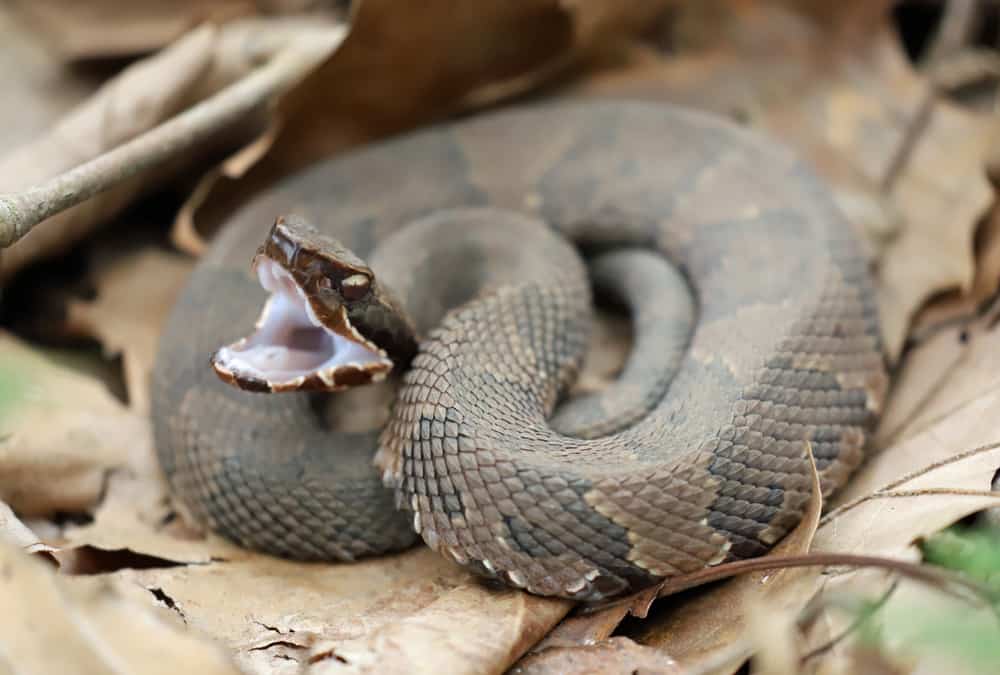
The venomous cottonmouth is named for the inside of its mouth, which is a stark white.
©KF2017/Shutterstock.com
4. Diamond-Backed Water Snake
Although they may seem like they are related to the diamond-backed rattlesnake, the diamond-backed water snake is actually a completely different, unrelated species. So different, in fact, that this species is not venomous.
They also have many other names, with one of the most common being the “queen snake.”

The diamond-backed water snake is not related to the diamond-backed rattlesnake despite its appearance.
©Tucker Heptinstall/Shutterstock.com
5. Mississippi Green Water Snake
Because the Atchafalaya River is connected to the Mississippi River, many of the species that you find in the latter make their way into this Louisiana River. This includes the Mississippi green water snake.
Like other species of water snake, the Mississippi green water snake is not venomous. However, they’re not as harmless as some other species. While many species of snake, venomous and nonvenomous alike, will choose to flee or freeze when faced with a threat, the Mississippi water snake has some other tricks up their sleeve.
First, they’re not afraid to deliver a painfully powerful bite when necessary. Although they don’t have a venom that can hurt humans, a bite is still painful. There is also a risk of bacteria and infection from a wound. Mississippi green water snakes will also release a foul-smelling musk. While this is intended to tell predators, “Hey, I don’t taste good!” it can also help deter human threats.

The Mississippi green water snake can deliver a painfully powerful bite when needed.
©Jason Patrick Ross/Shutterstock.com
6. Racer
Typically, in Louisiana, if you hear about a racer snake, it’s usually a reference to the eastern racer snake. This is a nonvenomous species, of which there are 11 subspecies scattered across North America and Central America.
These are long, lean snakes. Adults have been recorded to be up to 60 inches long!

Eastern racer snakes are nonvenomous, long, and lean.
©Matt Jeppson/Shutterstock.com
7. Speckled King Snake
There are several species of king snake in the western hemisphere. The speckled king snake is one of them, and they just so happen to be one of the types of snake in the Atchafalaya River. They have a mostly black dorsal side. Their bellies can be white or yellow, and they sport a variety of spots on their dorsal side that matches this color.
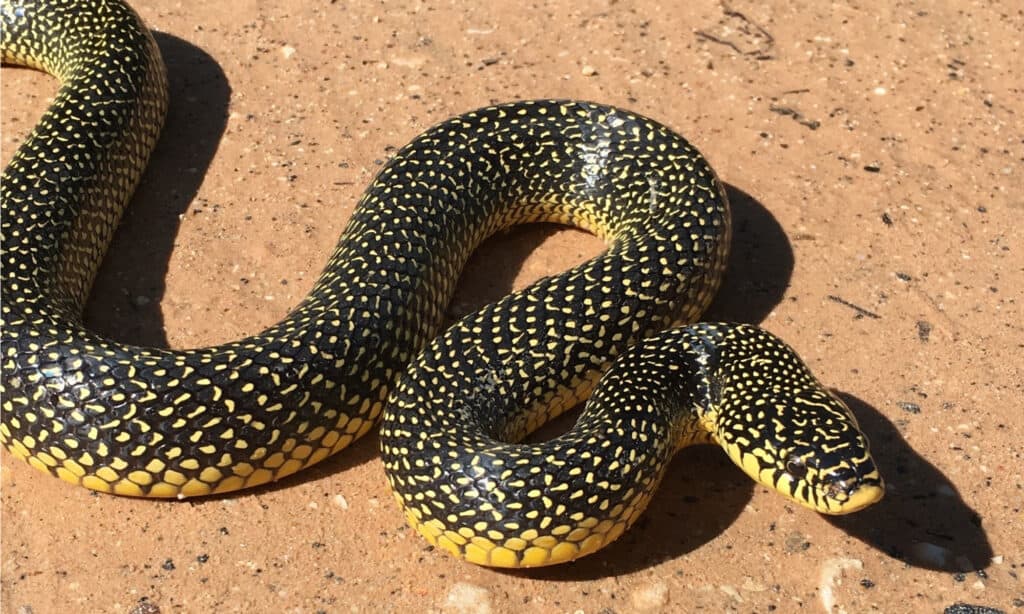
The speckled king snake has a mostly black dorsal side, and their bellies can be white or yellow.
©Joe Farah/Shutterstock.com
The photo featured at the top of this post is © Laurie L. Snidow/Shutterstock.com
Discover the "Monster" Snake 5X Bigger than an Anaconda
Every day A-Z Animals sends out some of the most incredible facts in the world from our free newsletter. Want to discover the 10 most beautiful snakes in the world, a "snake island" where you're never more than 3 feet from danger, or a "monster" snake 5X larger than an anaconda? Then sign up right now and you'll start receiving our daily newsletter absolutely free.
Thank you for reading! Have some feedback for us? Contact the AZ Animals editorial team.







